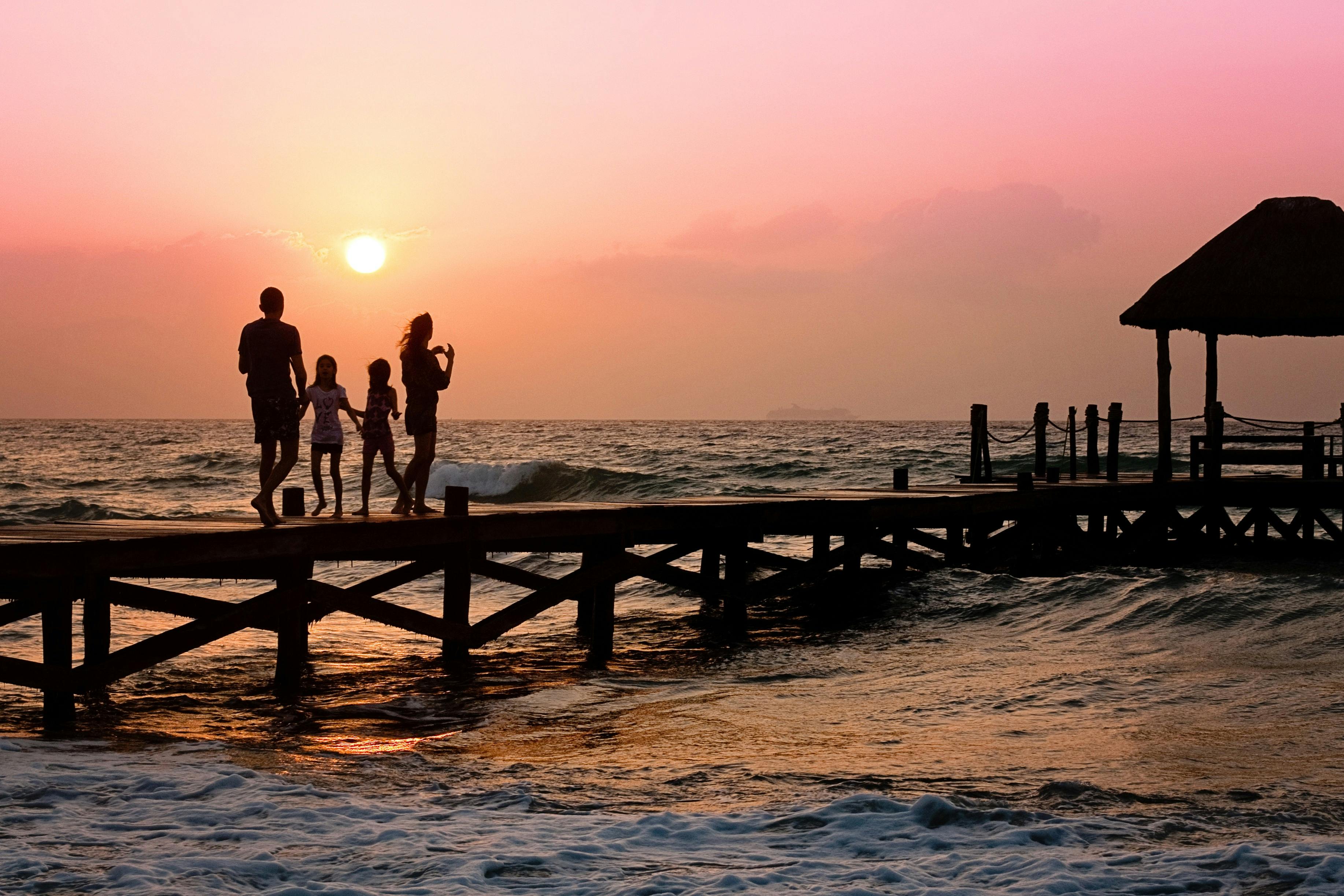How to Choose the Best Sunscreen for Kids

Here’s how to ensure you pick the best sun protection for your child’s sensitive skin.
Most parents today know how important it is to put sunscreen on their kids to protect them from getting sunburnt. In fact, 74% of parents report that they worry about sun protection for their children more than their parents did with them.
That’s good news. Because children’s skin is more sensitive than adults’—as its natural defense mechanisms are not yet fully developed—they are more susceptible to burning. And sunburns aren’t just uncomfortable, they can increase the risk of developing skin cancer later in life. In fact, studies show a higher rate of malignant melanoma in people with a history of sunburns during childhood.
That’s why applying SPF all year round is vital to keep skin healthy. So what kind of sunscreen is best for kids and their sensitive skin? And what are the best practices for ensuring they get proper SPF coverage? In this guide, we’ll break down what ingredients and product types to look for—as well as tips to apply for optimal coverage—so that kids stay protected from the sun all year long.
When is it necessary for kids to wear sunscreen?
Every child should wear sunscreen outside, unless they’re an infant under the age of six months. The FDA and the American Academy of Pediatrics (AAP) recommend keeping babies younger than six months out of direct sunlight altogether since they have extra-sensitive skin that puts them at greater risk for sunscreen side effects like skin irritation.
Once babies reach six months old, sunscreen is fair game. The American Academy of Dermatology (AAD) recommends that children over the age of six months wear sunscreen that is labeled broad spectrum and water-resistant, with an SPF of 30 or higher. This is especially important between 10 a.m. and 2 p.m., when the sun’s UV rays tend to be strongest. The AAD’s sunscreen guidelines apply to all children, no matter their skin tone, as well as any outdoor activity and whether it’s sunny, cloudy, hot, or cold.
This is cause for confusion among some, according to a 2020 survey of parents of children ages 5-12. While the majority (92%) said they think it’s very important to use sunscreen to prevent sunburn, around half seemed to harbor some common misconceptions about using sunscreen on their kids, saying they consider their child’s skin tone (62%), how hot it is outside (52%), and whether it’s sunny or cloudy (46%) as influential in their decision to use it. Simply put, these factors shouldn’t dictate a decision to apply sunscreen to kids.
What to consider when choosing a sunscreen for kids
There’s an endless amount of sunscreen products available for kids. Unfortunately, just because it is marketed to children on the label doesn’t mean it’s the best pick.
Choosing the right one depends on several factors, but it’s always wise to start with the basics: opt for a sunscreen that is labeled as broad spectrum and water-resistant, with an SPF of 30 or higher.
From there, consider the following:
- Application types
Sunscreen comes in a variety of forms. All can be effective options, but not all are equally easy to apply to squirmy kids or take along to a park trip. Face sticks such as Vertra’s Invisible Face Stick are easy to slide into diaper bags and backpacks, as well as easy to apply to kids’ faces without getting messy. Lotions and sprays such as the Coconut Vanilla Body Spray are also popular for body coverage; and lip balms including the Coconut Sunscreen Lip Balm give often-overlooked lips proper SPF coverage.
- Outdoor activities
If kids are planning to participate in activities where they’ll sweat or be exposed to water, opt for a sunscreen that is labeled water resistant. These sunscreens are formulated with water-resistant properties that allow them to remain effective for a set amount of time (described on the bottle) during water exposure. All of Vertra’s face sticks and Coconut Vanilla Body Spray are water resistant for up to 80 minutes.
- Mineral vs. chemical
Chemical and mineral-based sunscreens are both effective at protecting the skin. But some dermatologists suggest that mineral-based sunscreens, formulated with zinc oxide or titanium oxide, are potentially less likely to irritate kids with sensitive skin conditions such as eczema. Vertra sells mineral options formulated with ingredients that are cruelty-free, paraben-free, and fragrance-free. These include Sensitive Light White Sunscreen Face Stick, which is certified organic by the National Sanitation Foundation and gentle on skin.
Tips for applying sunscreen on kids
No matter the quality of sunscreen you choose for kids, it’s only as effective as how you apply and reapply. Follow these best practices for proper coverage:
- Apply early and frequently
Dermatologists recommend applying sunscreen on dry skin 15 minutes before sun exposure and reapplying at least every two hours, no matter the SPF level. However, if kids are planning to swim or participate in other activities that involve water, they’ll need to reapply more frequently. To guarantee that no one forgets to reapply, set reminders on your phone or watch every two hours.
- Supervise application
Teaching kids how to properly apply and reapply sunscreen, and supervising their routine, is key to ensure they remain protected throughout the day. The Vertra Transport carrying case comes with a mirror to help with application.
- Don’t forget easy-to-miss body parts
Covering the face, arms, and legs is important, but kids should apply sunscreen on all exposed skin—including the neck, ears, lips, and tops of feet.
- Always bring sunscreen on the go
Because it’s so important to re-apply sunscreen throughout the day, it’s always a good idea to keep product in your bag. To avoid a messy situation with lotion spilling, consider Vertra’s face sticks, which are solid and ultra-portable, as well as Vertra’s Coconut Vanilla Body Spray SPF 50.
Pack sunscreen on your next family adventure
Whether you’re heading to the beach, pool, or the mountains with your kids, choosing small, travel-friendly sunscreen products will make it easier to bring SPF on any outdoor adventure. And most of Vertra’s sunscreen and sun protection products are ideal for when you’re on the go with your children, especially the Sensitive Light White Sunscreen Face Stick which is made to be gentle on delicate skin.
With our SPF products and tips in mind, you and the kids in your life will be ready to have fun in the sun while staying protected from UV rays throughout the day.
